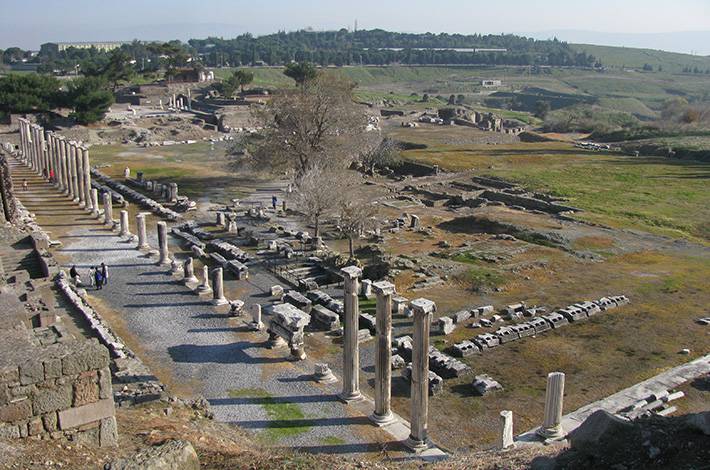Its History: At the base of Pergamon Acropolis, there was a healing complex built in the 4th century BC in honor of Asclepius, the God of Healing. With its advanced architectural layout and the treatment methods employed, it earned the title of the most important healing center in western Anatolia.
Remains of Asklepion's surviving ruins belong to the arrangements promoted by the Roman Emperor Hadrian in the 2nd century AD. Asklepion shows the feature of being a sacred area in earlier periods than its foundation date. However, its development started after the 4th century BC.
The entrance to the Sanctuary was led through Via Tecta (the Sacred Way), a path which was paved with a length of 1 km and the last part of which was a colonnaded street. At the end of the road there is the monumental entrance (Propylon), the library hall to the right of the entrance, and the temple dedicated to Zeus to the left of the entrance. Following the monumental entrance there is a large feast courtyard. The north, south and west directions of the courtyard are surrounded by colonnaded galleries. There is a theatre adjacent to the northwest corner with a seating capacity of 3,500, a gallery extending to the west in the western corner, a large banquet hall in the south and latrines (toilets) in the southern corner. In the southeast corner of the courtyard there is a circular treatment center sometimes known as the Temple of Telesphorus.
In the western part of the grand courtyard there are remains of sacred healing springs, the temple and the sleeping rooms of the early period.
Information about the treatment methods applied in the Asklepion health center is learned from the famous orator Aelius Aristides of the ancient times. Aristides was treated at Asklepion and explained the treatment methods in detail in his book Hieroi Logoi. In the sleep rooms, patients were tried to be treated with various methods such as putting them to sleep, listening to the sound of water, mud treatments, healing water treatment, cupping, diet therapies, therapy and music therapy. Pergamon, one of the most important health cities in the ancient world, is the hometown of Galen of Pergamon, known as the father of Pharmacy. Galen here took care of gladiators and Roman kings and made important discoveries in the field of Pharmacology.
Asklepion healing center has become an important place among other contemporary treatment centers in Epidaurus and Kos because of its advanced complex layout of architecture of the Roman period, treatment methods for diseases, physicians serving here and the treatment methods developed by Galen of Pergamon.







